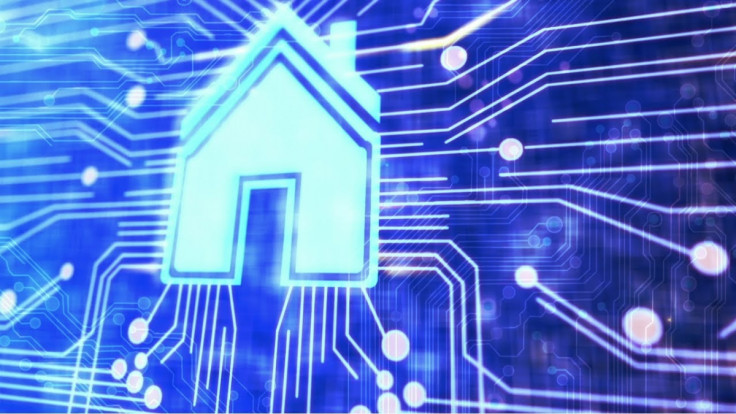Will banks catch the curve of the machine-to-machine economy?
Blockchains will drive an M2M economy of autonomous vehicles, drones, robots and 3D printers

A useful example of the largely misunderstood concept of exponential technological transformation is the introduction of electric motors. When these replaced steam power in factories not much changed at first. It wasn't until these motors were shrunk and located at points across production lines that globalisation as we know it happened.
Interestingly, the time this took to happen – 20-odd years – is about how long it's taken the early web to reach the "Internet of Things" (IoT) and the introduction of blockchain technology.
We are now at the tipping point. Technologies like IoT, autonomous vehicles, drones, robots or 3D printers will "people" this brave new machine-to-machine (M2M) economy.
Core information and communication devices, which have been traditionally confined to boxes (PCs, smart phones, tablets etc) are increasingly embedded in all types of artefacts making our homes, offices, cars, trains, public spaces and cities "smarter".
It's still unclear what scale we are talking about here and the impact it will have on society – but we can expect between 20 and 50 billion IoT devices by 2020.
Autonomous entities will evolve that start transacting digital and physical values among each other. Resources will be optimised, access capacities and flexibilities valuated and traded among market participants in the form of a digital token.
Blockchains transacting and disbursing micropayments using self-executing contracts will be the essential lubricant of this economy.
During a panel session on blockchain and IoT at the recent Consensus 2016 conference, Carsten Stöcker of the innovation programme at German utility RWE, made the point that the vast majority of corporates including banks do not as yet have an IoT strategy to connect M2M transactions to the physical world.
Stöcker said: "Today we have two types of customers, individuals and corporates. Now with the rise of the machine-to-machine economy, a new customer segment of machines is arising."
"Our assumption is that these M2M economies will be orchestrated as transactions on the blockchain. And the prerequisite to be part of the machine-to-machine economy is to have an integrated IoT and blockchain strategy and a footprint in both, IoT and blockchain space."
Stöcker added that some banks and insurance companies have an IoT stream and a blockchain stream, but both teams work pretty much in silos.
Exploring combinations
Establishing interfaces for retail or corporate customers in the M2M economy may not be classed as an important investment area for banks.
Citi Ventures, which accelerates innovation at Citi, is exploring the potential of blockchain and IoT as a member of the IDEO coLAB. The coLAB is a collaborative network of partners including Citi Ventures, Fidelity, Liberty Mutual and NASDAQ focused on accelerating the research and development of emerging technologies for their respective industries.
Ian Lee, head of the Global Lab Network for Citi Ventures, who was also speaking on the subject at Consensus 2016, said: "As a member of coLAB, we are starting to explore how the combination of blockchain and IoT could create new solutions and experiences for consumers and institutions.
"The idea of a machine-to-machine economy is not new, but the emergence of blockchain further enables financial institutions that are already involved in commerce, transactions and contracts to explore the potential development of new IoT-enabled systems," he said.
For some time now Stöcker has been working on technical implementation scenarios for the M2M economy. He expects to see super-lean light blockchain nodes running on IoT devices that are connected to a P2P network with either plenty of distributed computing power or datacentre grade blockchain nodes; IoT data and tokens of value will be stored in scalable blockchainified databases such as BigchainDB; millions of IoT transactions per second will be executed using either crypto conditions or smart contract business logic incentivised by transaction fees. A variety of algorithms will solve optimisation problems for connected systems of IoT devices.
Banks have certainly woken up to the concept of blockchains, but if they don't have a blockchain-based IoT strategy, if they don't have access to IoT devices, they will not participate in the transactions of IoT devices and they lose the whole market share in the M2M economy, Stöcker reiterated.
On the edge of exponential change
"So for corporates with physical assets it's easier because they have IoT devices in grids, smart homes, logistics fleets, cars or manufacturing assets.
"This is done by business logic in decentralised systems such as a smart contract. Of course there will be competition in terms of smart contracts; people go to smart contracts with the least transaction fee. It's super-zero margin economy. The financial transaction comes (almost) for free on a public blockchain; there could be no space for banks. There might be some space for physical industries. Who has this tiny space is completely unclear. But it will probably be just one kind of entity that will dominate this space."
Stöcker agrees we are at the edge of exponential change. When the internet was built it started with slow modems but now homes are connected using fibre. This infrastructure is already in place so IoT and blockchain-enabled entities can piggy-back existing infrastructure making the pace of change much, much faster.
Lee said he believes that it's still too early to predict a timeline for when we will see solutions in market, but that it is important for the financial industry to continue to experiment to understand and explore blockchain and IoT's potential.
© Copyright IBTimes 2025. All rights reserved.






















